
Causes of Red Tips on Succulent Plants: A Comprehensive Guide

Succulent plants are known for their unique appearance and ability to store water in their leaves, stems, or roots. With their vibrant colors and interesting shapes, succulents have become increasingly popular in both indoor and outdoor gardens. However, one common issue that succulent owners may encounter is the development of red tips on their plants. This phenomenon can be concerning for plant enthusiasts, as it may indicate a problem with the plant's health or care.
We will explore the various causes of red tips on succulent plants and provide a comprehensive guide on how to identify and address these issues. We will discuss both environmental factors and plant diseases that can lead to red tips, such as sunburn, nutrient deficiency, overwatering, pests, and fungal infections. Additionally, we will offer practical tips and techniques to prevent and treat red tips, ensuring that your succulent plants remain healthy and vibrant.
- Insufficient sunlight can cause red tips on succulent plants
- Overwatering can lead to red tips on succulent plants
- Nutrient deficiency in the soil may result in red tips on succulent plants
- Pests or diseases can cause red tips on succulent plants
- Temperature extremes can contribute to red tips on succulent plants
- Improper watering practices can lead to red tips on succulent plants
- Lack of air circulation can cause red tips on succulent plants
- Stress from environmental changes can result in red tips on succulent plants
- Overfertilization can lead to red tips on succulent plants
- Genetic factors may be responsible for red tips on succulent plants
- Insufficient sunlight can cause the tips of succulent plants to turn red
- Red tips on succulent plants can be caused by overwatering
- Succulent plants may develop red tips if there is a nutrient deficiency in the soil
- The presence of pests or diseases can result in red tips on succulent plants
- Extreme temperatures can contribute to succulent plants developing red tips
- Red tips on succulent plants can occur due to improper watering practices
- Lack of air circulation can cause the tips of succulent plants to turn red
- Succulent plants may develop red tips as a response to stress from environmental changes
- Overfertilization can lead to the tips of succulent plants turning red
- Genetic factors may be responsible for succulent plants developing red tips
- Frequently Asked Questions
Insufficient sunlight can cause red tips on succulent plants
Insufficient sunlight is one of the common causes of red tips on succulent plants. Succulents are known for their ability to thrive in bright and direct sunlight. When they don't receive enough light, it can lead to various issues, including red tips.
Succulents need at least 6 hours of direct sunlight each day to maintain their vibrant and healthy appearance. When they are not exposed to enough sunlight, their leaves may start turning red at the tips as a response to stress.
The red coloration is a result of the plant producing anthocyanins, pigments that protect the leaves from excessive sun exposure. These pigments act as a natural sunscreen for the plant, absorbing harmful UV rays and preventing damage.
To prevent red tips caused by insufficient sunlight, it's crucial to provide your succulents with the right amount of light. Place them in a sunny location where they can receive adequate sunlight throughout the day. If you're growing succulents indoors, consider using grow lights to supplement their light requirements.
 Understanding and Treating the White Substance on Succulents
Understanding and Treating the White Substance on SucculentsTips to prevent red tips caused by insufficient sunlight:
- Place your succulents in a location where they can receive at least 6 hours of direct sunlight each day.
- If growing indoors, use grow lights to provide supplemental light.
- Monitor the position of your succulents and rotate them regularly to ensure all sides receive equal exposure to sunlight.
By providing your succulents with adequate sunlight, you can prevent red tips and help them thrive.
Overwatering can lead to red tips on succulent plants
One of the common causes of red tips on succulent plants is overwatering. Succulents are adapted to survive in arid environments, and their leaves store water to sustain them during dry periods. When succulents are overwatered, the excess moisture can cause the tips of the leaves to turn red.
Overwatering can lead to root rot, which prevents the roots from efficiently absorbing water and nutrients from the soil. As a result, the plant may show signs of stress, such as red tips. It's important to remember that succulents have different watering needs compared to other houseplants. They prefer to be underwatered rather than overwatered.
To avoid overwatering your succulent plants, make sure to water them only when the top inch of soil is dry. Additionally, ensure that the pot has proper drainage to allow excess water to escape. It's also beneficial to use a well-draining soil mix specifically formulated for succulents to prevent water retention.
Tips to prevent overwatering:
 Causes of Blue Discoloration in Succulent Leaves
Causes of Blue Discoloration in Succulent Leaves- Water your succulents sparingly and allow the soil to dry out between waterings.
- Ensure that the pot has drainage holes to prevent water from pooling at the bottom.
- Use a well-draining soil mix specifically designed for succulents.
By taking these preventative measures and being mindful of your succulents' watering needs, you can help prevent red tips caused by overwatering. Remember, it's always better to underwater than overwater succulent plants.
Nutrient deficiency in the soil may result in red tips on succulent plants
One of the common causes of red tips on succulent plants is nutrient deficiency in the soil. Succulents, like any other plants, require a balanced supply of essential nutrients to thrive and maintain their vibrant appearance.
When the soil lacks certain nutrients, it can lead to various visual symptoms, including red tips on the leaves. This is often a sign of nutrient deficiency, particularly in macronutrients such as nitrogen, phosphorus, or potassium.
Nitrogen deficiency: Nitrogen is an essential nutrient for plant growth and is responsible for promoting healthy foliage. When succulents lack sufficient nitrogen, their leaves may turn pale or yellowish, and the tips can develop a reddish hue.
Phosphorus deficiency: Phosphorus plays a crucial role in energy transfer and root development. Insufficient phosphorus can cause stunted growth and lead to red discoloration at the tips of succulent leaves.
Potassium deficiency: Potassium is necessary for overall plant health and helps in various physiological processes. When succulents lack potassium, they may exhibit signs of poor growth, including red tips on the leaves.
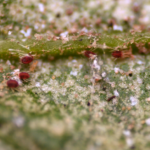 Eliminating White Webs on Succulents: A Comprehensive Guide
Eliminating White Webs on Succulents: A Comprehensive GuideIt is important to note that nutrient deficiencies can be caused by various factors, such as poor soil quality, overwatering, or improper fertilization. To address nutrient deficiencies and prevent red tips on your succulent plants, it is crucial to provide them with a well-balanced fertilizer specifically formulated for succulents.
Tips to prevent nutrient deficiencies:
- Test the soil: Before planting succulents, it is recommended to test the soil to determine its nutrient content. This can help identify any potential deficiencies and allow you to amend the soil accordingly.
- Use a balanced fertilizer: Choose a fertilizer specifically formulated for succulents, ensuring it contains a balanced ratio of nitrogen, phosphorus, and potassium.
- Follow a proper watering routine: Overwatering can lead to nutrient leaching from the soil. Water your succulents only when the top inch of soil is dry to prevent nutrient deficiencies.
- Provide adequate sunlight: Succulents require sufficient sunlight to carry out photosynthesis and absorb nutrients effectively. Ensure they are placed in a location where they receive the recommended amount of sunlight for their specific species.
- Monitor for signs of deficiency: Regularly inspect your succulents for any signs of nutrient deficiencies, including red tips on the leaves. Early detection can help you take prompt action to address the issue.
By implementing these measures, you can ensure that your succulent plants receive the necessary nutrients to maintain their overall health and prevent the occurrence of red tips on their leaves.
Pests or diseases can cause red tips on succulent plants
When you notice red tips on your succulent plants, it's important to investigate the cause as it may indicate a potential problem. One common reason for red tips on succulents is the presence of pests or diseases.
Pests such as aphids, mealybugs, and spider mites can infest succulent plants and cause damage to their leaves. These pests feed on the plant's sap, which can lead to the development of red tips. Additionally, they may leave behind a sticky residue known as honeydew, which can attract other pests and create a favorable environment for fungal growth.
Another possible cause of red tips is a fungal or bacterial infection. Succulents are susceptible to various diseases, including fungal infections like powdery mildew or bacterial infections like Erwinia. These infections can cause discoloration and damage to the plant's tissues, resulting in red tips.
To address pest infestations, it's essential to regularly inspect your succulents for any signs of pests. Look for tiny insects, webbing, or sticky residue on the leaves. If you spot any pests, you can try removing them manually using a cotton swab dipped in rubbing alcohol or by using insecticidal soap. For severe infestations, it may be necessary to use a suitable insecticide, but be sure to follow the instructions carefully.
 White-Dotted Succulents: Potential Poisonous Effects on Pets
White-Dotted Succulents: Potential Poisonous Effects on PetsWhen it comes to fungal or bacterial infections, prevention is key. Avoid overwatering your succulents and ensure they have good airflow to prevent the development of humid conditions ideal for fungal growth. If you notice signs of infection, such as discolored or wilting leaves, it's important to take action promptly. You can try applying a suitable fungicide or bactericide to treat the infection, following the product's instructions carefully.
Red tips on succulent plants can be caused by pests such as aphids or spider mites, as well as fungal or bacterial infections. Regular inspection, proper watering, and good airflow can help prevent these issues from occurring. If you notice red tips on your succulents, it's crucial to identify and address the underlying cause to ensure the health and vitality of your plants.
Temperature extremes can contribute to red tips on succulent plants
Temperature extremes can be a major factor contributing to the development of red tips on succulent plants. These plants are known for their ability to tolerate various environmental conditions, but extreme temperatures can still take a toll on their health.
When exposed to high temperatures, succulent plants may experience sunburn, which can manifest as red or brown tips on their leaves. This occurs when the intense heat causes damage to the plant's cells, leading to discoloration.
On the other hand, succulent plants can also develop red tips when exposed to extremely cold temperatures. Frost damage is a common issue during winter months, especially for outdoor succulent gardens. The freezing temperatures can cause the plant cells to burst, resulting in red or blackened tips.
To prevent red tips caused by temperature extremes, it's crucial to provide appropriate protection for your succulent plants. If you live in an area with scorching hot summers, consider providing some shade during the hottest parts of the day. This can be achieved by placing your succulents under a tree or using shade cloth to filter the direct sunlight.
 Identifying and Treating Root Rot in Succulents: Signs and Options
Identifying and Treating Root Rot in Succulents: Signs and OptionsSimilarly, during freezing winters, it's essential to provide adequate insulation for your succulent plants. Consider bringing them indoors or providing a protective cover, such as a frost cloth or a greenhouse, to shield them from the harsh cold.
Remember, succulent plants thrive in moderate temperatures, typically ranging between 65°F and 85°F (18°C to 29°C). By maintaining a stable temperature and protecting your plants from extreme weather conditions, you can minimize the risk of red tips and ensure their overall well-being.
Improper watering practices can lead to red tips on succulent plants
Succulent plants are known for their ability to store water in their leaves and stems, making them resilient in dry conditions. However, improper watering practices can cause red tips to appear on these plants, indicating a problem. If you notice red tips on your succulent plants, it's crucial to identify the cause and take appropriate action to prevent further damage.
1. Overwatering
Overwatering is one of the main culprits behind red tips on succulent plants. These plants thrive in well-draining soil and are adapted to survive with minimal water. When they receive excessive moisture, their roots can become waterlogged, leading to root rot. This can manifest as red tips or even blackened leaves.
To avoid overwatering, ensure that your succulent is planted in a well-draining soil mix specifically designed for succulents. Allow the soil to dry out completely between watering sessions. Remember, it's better to underwater than to overwater succulents.
2. Underwatering
On the flip side, underwatering can also cause red tips on succulent plants. When succulents don't receive enough water, their leaves may become dehydrated, resulting in red discoloration. This is often accompanied by shriveled or wrinkled leaves.
 How to Save a Moldy Succulent: Removing Mold and Restoring Health
How to Save a Moldy Succulent: Removing Mold and Restoring HealthIt's essential to find the right balance when watering succulents. While they are drought-tolerant, they still require regular watering. Check the moisture level of the soil by sticking your finger about an inch deep – if it feels dry, it's time to water your succulent.
3. Sunburn
Succulents love bright light, but too much direct sunlight can cause sunburn, leading to red tips. This is more common in succulents that have been recently moved to a sunnier location or those that are not acclimated to intense sunlight.
To prevent sunburn, gradually introduce your succulent to brighter light conditions by placing it in a partially shaded spot for a few hours each day. Over time, you can increase the exposure to direct sunlight, allowing the plant to adapt without getting sunburned.
4. Nutrient deficiencies
In some cases, red tips on succulent plants can be a sign of nutrient deficiencies. Lack of essential nutrients like nitrogen, phosphorus, or potassium can affect the plant's overall health and lead to red discoloration. Using a balanced fertilizer specifically formulated for succulents can help address these deficiencies.
Remember to follow the instructions on the fertilizer packaging and avoid over-fertilizing, as excessive nutrients can also harm your succulent. Always strive for a balanced approach.
Red tips on succulent plants can be caused by several factors, primarily improper watering practices, sunburn, and nutrient deficiencies. By understanding these causes and implementing appropriate measures, you can ensure the health and vibrant appearance of your succulent plants.
Lack of air circulation can cause red tips on succulent plants
One common cause of red tips on succulent plants is a lack of air circulation. Succulents thrive in well-ventilated environments, and when they are grown in areas with poor air circulation, it can lead to various issues, including the development of red tips.
 Reviving a Succulent with Root Rot: Best Methods for Recovery
Reviving a Succulent with Root Rot: Best Methods for RecoveryWhen succulents are not provided with enough air movement, moisture can accumulate on the surface of their leaves. This excess moisture can create a favorable environment for fungal and bacterial growth, leading to infections and diseases. As a defense mechanism, succulents produce a red pigment called anthocyanin, which can be seen as red tips on their leaves.
To prevent red tips caused by a lack of air circulation, it is essential to provide adequate ventilation for your succulent plants. Here are some tips to improve air circulation:
- Place your succulents in well-ventilated areas such as near open windows or doors.
- Use a fan to create gentle air movement around your succulents.
- Avoid overcrowding your plants, as this can restrict air flow between them.
- Prune any overgrown branches or leaves that may be obstructing air circulation.
By ensuring proper air circulation, you can help prevent the development of red tips on your succulent plants and promote their overall health and vitality.
Stress from environmental changes can result in red tips on succulent plants
Succulent plants are known for their ability to store water in their leaves, stems, and roots, making them resilient in arid conditions. However, even these hardy plants can show signs of stress when exposed to certain environmental changes. One common indication of stress in succulents is the appearance of red tips on their leaves.
When a succulent experiences stress, it triggers a response that leads to the production of anthocyanins – pigments responsible for the red coloration. These pigments are produced as a protective mechanism against excessive sunlight, low temperatures, or dehydration. The red tips act as a sunscreen, shielding the sensitive parts of the plant from further damage.
There are several factors that can cause environmental stress in succulent plants, leading to the development of red tips. Let's explore some of the most common causes:
 Succulent Care: Treating Brown Spots and Disease
Succulent Care: Treating Brown Spots and Disease1. Sunburn
Succulents thrive in bright light, but prolonged exposure to intense sunlight can cause sunburn. When succulents receive more sunlight than they can handle, the excess energy can damage their tissues, resulting in red or brown discoloration on the tips of their leaves. It is important to gradually acclimate succulents to direct sunlight and provide them with some shade during the hottest parts of the day.
2. Cold Temperatures
Succulents are generally adapted to warm and dry climates. Exposure to cold temperatures, especially frost, can cause cellular damage in succulent plants. As a defense mechanism, the plant produces anthocyanins to protect its cells from further harm. If your succulent is showing red tips during the colder months, consider providing additional protection or moving it to a warmer location.
3. Underwatering
Succulents are designed to withstand periods of drought, but they still need regular watering. Underwatering can stress the plant, leading to the development of red tips on the leaves. It is important to find the right balance between watering and allowing the soil to dry out completely before watering again. The frequency of watering depends on factors such as the succulent species, pot size, and environmental conditions.
4. Overfertilization
While fertilization can be beneficial for succulent plants, overdoing it can cause stress. Excessive amounts of fertilizers can disrupt the plant's natural balance and lead to nutrient imbalances, resulting in red tips. It is crucial to follow the recommended dosage and frequency when fertilizing succulents, and always dilute the fertilizer according to the instructions.
5. Root Stress
Succulents have shallow root systems that are sensitive to disturbances. Repotting, root damage, or overcrowded roots can stress the plant, leading to red tips. When repotting, handle the roots with care, and ensure the new pot has proper drainage. Avoid disturbing the roots unnecessarily, as this can disrupt the plant's ability to take up water and nutrients.
By understanding the causes of red tips on succulent plants, you can identify and address the underlying issues to help your plants thrive. It's important to remember that while red tips may indicate stress, they are not always a cause for concern. With proper care and attention, your succulents will continue to beautify your space with their unique colors and shapes.
Overfertilization can lead to red tips on succulent plants
 How to Remove White Mold From Succulents: Essential Tips and Tricks
How to Remove White Mold From Succulents: Essential Tips and TricksWhen it comes to caring for succulent plants, it's important to strike the right balance in terms of fertilization. Overfertilization is one of the common causes of red tips on succulent plants.
What is overfertilization?
Overfertilization occurs when succulent plants receive an excessive amount of nutrients. This can happen when gardeners or plant enthusiasts apply fertilizer too frequently or use a highly concentrated fertilizer.
How does overfertilization cause red tips?
The excessive amount of nutrients, particularly nitrogen, present in overfertilized soil can lead to a buildup of salts. When these salts accumulate in the soil, they can hinder the succulent plant's ability to absorb water properly. As a result, the plant may experience water stress, leading to the development of red tips.
Signs of overfertilization
If your succulent plant is suffering from overfertilization, you may notice several signs, including:
- Red or brown discoloration at the tips of the plant
- Leaf burn or scorching
- Wilting or drooping leaves
- Stunted growth
- Root damage
Preventing overfertilization
To prevent overfertilization and the resulting red tips on your succulent plants, follow these guidelines:
- Use a balanced fertilizer: Choose a fertilizer specifically formulated for succulents or cacti. These fertilizers typically have a lower nitrogen content to prevent overfeeding.
- Follow the recommended dosage: Read the instructions on the fertilizer packaging carefully and apply the recommended amount. Avoid exceeding the recommended dosage.
- Fertilize sparingly: Succulent plants have lower nutritional needs compared to other plants. Fertilize sparingly, usually once or twice during the growing season.
- Water properly: Proper watering techniques can help flush excess salts from the soil. Water your succulent plants thoroughly, allowing the water to drain out of the pot completely.
By being mindful of your succulent plant's fertilization needs and taking preventive measures, you can avoid overfertilization and the occurrence of red tips. Remember, a healthy and balanced approach to fertilization is key to maintaining vibrant and thriving succulent plants.
Genetic factors may be responsible for red tips on succulent plants
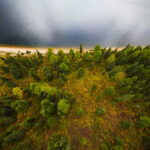 Understanding the Causes of Spider Web-Like Growths in Succulents
Understanding the Causes of Spider Web-Like Growths in SucculentsOne of the main causes for red tips on succulent plants can be attributed to genetic factors. Different succulent species have varying levels of pigmentation in their leaves, which can result in the development of red tips.
The red coloration is often a result of the presence of pigments called anthocyanins. These pigments are responsible for the red, purple, or blue hues seen in many plants. Depending on the genetic makeup of the succulent, it may produce higher levels of anthocyanins in its leaves, leading to the appearance of red tips.
Furthermore, certain succulent cultivars have been selectively bred to exhibit vibrant red tips as a desirable trait. These cultivars are often prized among succulent enthusiasts for their unique and eye-catching appearance.
It is important to note that not all succulent plants will exhibit red tips due to genetic factors. Environmental conditions and other factors can also contribute to the development of red tips, which will be discussed further in the following sections.
Insufficient sunlight can cause the tips of succulent plants to turn red
Insufficient sunlight can be a major cause of red tips on succulent plants. These plants require plenty of sunlight to thrive and maintain their vibrant colors. When they do not receive enough sunlight, they may develop red tips as a sign of stress.
Succulents are known for their ability to store water in their leaves, stems, and roots. This adaptation allows them to survive in arid environments. However, it also means that they rely heavily on sunlight for photosynthesis, the process by which they convert sunlight into energy.
When succulents do not receive adequate sunlight, they cannot produce enough energy to sustain themselves. As a result, their growth may become stunted, and their leaves may start to show signs of distress, including red tips.
To prevent red tips caused by insufficient sunlight, it is important to provide your succulent plants with the right amount of light. Place them in a location where they can receive at least six hours of direct sunlight each day. South-facing windowsills are often ideal for succulents, as they provide intense sunlight for most of the day.
If you are growing succulents indoors, you may need to supplement their light requirements with artificial grow lights. These lights mimic the natural spectrum of sunlight and can help prevent red tips and other signs of light deficiency.
Red tips on succulent plants can be caused by overwatering
Overwatering
One of the most common causes of red tips on succulent plants is overwatering. Succulents are known for their ability to store water in their leaves, stems, or roots, allowing them to survive in arid conditions. However, when they receive too much water, their tissues become saturated, leading to a variety of issues, including red tips.
When succulents are overwatered, the excess moisture can lead to root rot. This occurs when the roots are constantly sitting in wet soil, causing them to become waterlogged and preventing proper oxygenation. As a result, the plant's ability to absorb nutrients is compromised, leading to red discoloration at the tips of the leaves.
To prevent overwatering, it's essential to establish a proper watering routine for your succulents. As a general rule, only water your succulents when the top inch of soil feels dry. Additionally, ensure that the pot has proper drainage to allow excess water to escape. Remember, succulents prefer to be slightly underwatered rather than overwatered.
If you suspect overwatering is the cause of the red tips on your succulent plants, it's crucial to adjust your watering habits and provide appropriate care to prevent further damage.
Succulent plants may develop red tips if there is a nutrient deficiency in the soil
When it comes to succulent plants, one common issue that plant enthusiasts often encounter is the development of red tips. These vibrant red tips can be quite alarming for succulent owners, as they may indicate an underlying problem with the plant's health.
Nutrient deficiency is one of the primary causes of red tips on succulent plants. Succulents have specific nutritional requirements, and if these requirements are not met, they may start showing signs of nutrient deficiency, including red tips.
The most common nutrient deficiency that leads to red tips is nitrogen deficiency. Nitrogen is an essential nutrient for plants, as it plays a crucial role in their growth and development. When succulents lack an adequate supply of nitrogen, the older leaves may turn yellow or pale, while the newer growth at the tips of the plant may exhibit a vibrant red color.
To address this issue, it is essential to ensure that your succulent is receiving an appropriate amount of nitrogen. You can achieve this by fertilizing your plant with a balanced succulent fertilizer, which contains the necessary nutrients, including nitrogen. However, be cautious not to over-fertilize, as this can lead to other problems for your succulent.
Another potential cause of red tips on succulent plants is sunburn. Succulents are adapted to thrive in bright sunlight, but excessive exposure to intense sunlight can cause sunburn. This can manifest as reddening or browning of the tips of the leaves.
If you suspect sunburn as the cause of red tips on your succulent, it is advisable to provide some shade or move the plant to a location with indirect sunlight. Gradually acclimate the plant to brighter light over time to prevent further sunburn.
Overwatering can also contribute to the development of red tips on succulent plants. Succulents are known for their ability to store water in their leaves and stems, making them highly drought-tolerant. However, when succulents are overwatered, their roots may become waterlogged, leading to root rot and nutrient imbalance.
If your succulent is showing signs of overwatering, such as red tips and mushy leaves, it is crucial to adjust your watering routine. Allow the soil to dry out completely between waterings and ensure that the pot has proper drainage to prevent water from accumulating at the roots.
Red tips on succulent plants can be a sign of nutrient deficiency, sunburn, or overwatering. By addressing these potential causes and providing the necessary care, you can help your succulent regain its health and vibrant appearance.
The presence of pests or diseases can result in red tips on succulent plants
One of the common causes for red tips on succulent plants is the presence of pests or diseases. Pests such as aphids, mealybugs, and spider mites can infest succulent plants, causing damage to the leaves and resulting in red tips. These pests feed on the sap of the plant, which can lead to discoloration and stunted growth.
Diseases like root rot and fungal infections can also cause red tips on succulent plants. Root rot occurs when the roots of the plant are constantly wet, leading to the decay of the root system. This can disrupt the plant's ability to absorb water and nutrients, causing the leaves to turn red. Fungal infections, on the other hand, can attack the leaves and stems, causing them to become discolored and develop red tips.
To prevent and treat these issues, it is essential to regularly inspect your succulent plants for signs of pests or diseases. If you notice any infestations or infections, it is crucial to take immediate action to prevent further damage. Here are some steps you can take:
- Isolate the affected plant: If you spot any pests or signs of disease on one of your succulent plants, remove it from any nearby plants to prevent the spread of pests or diseases.
- Identify the pest or disease: It is important to properly diagnose the problem before taking any action. Consult a gardening expert, use online resources, or take a sample to a local nursery for identification.
- Treat the problem: Once you have identified the pest or disease, treat it accordingly. This may involve using organic pest control methods, such as neem oil or insecticidal soap, or applying fungicides for fungal infections.
- Improve plant care: Ensure that your succulent plants are receiving proper care, including providing adequate sunlight, well-draining soil, and appropriate watering. Avoid overwatering, as it can lead to root rot.
- Maintain good hygiene: Regularly clean your gardening tools and containers to prevent the spread of pests or diseases. Remove any fallen leaves or debris from around the plants, as they can harbor pests or fungal spores.
By being proactive in monitoring and addressing pest and disease issues, you can help keep your succulent plants healthy and vibrant, free from red tips.
Extreme temperatures can contribute to succulent plants developing red tips
Extreme temperatures can have a significant impact on succulent plants, causing them to develop red tips. Succulents are known for their ability to tolerate a wide range of temperatures, but when exposed to extreme heat or cold, they may exhibit signs of stress in the form of red tips.
When succulents are exposed to high temperatures, their leaves can become scorched, leading to the appearance of red or brown discoloration at the tips. This is often a result of the plant's natural defense mechanism, where it tries to protect itself from the excessive heat by producing anthocyanins, which give the leaves a reddish hue.
On the other hand, succulents can also develop red tips in response to cold temperatures. When exposed to frost or freezing conditions, succulents may experience cell damage, which can manifest as red discoloration at the tips of their leaves. This is a sign that the plant's tissues have been affected by the cold and are undergoing stress.
To prevent succulents from developing red tips due to extreme temperatures, it is important to provide them with the appropriate care. Here are a few tips:
- Provide proper insulation: During periods of extreme heat or cold, consider moving your succulents indoors or providing them with some form of insulation, such as placing them in a greenhouse or covering them with a frost cloth.
- Water appropriately: Succulents are adapted to survive in arid conditions and do not require frequent watering. Overwatering can make them more susceptible to temperature stress. Ensure you water them sparingly and allow the soil to dry out between waterings.
- Choose the right location: Place your succulents in areas that provide adequate sunlight without exposing them to excessive heat or cold. Consider using shades or blinds to regulate the amount of sunlight they receive.
- Monitor temperature fluctuations: Keep an eye on weather forecasts and take necessary precautions when extreme temperatures are expected. Consider using thermometers to monitor the temperature in different areas where your succulents are located.
By following these guidelines, you can help prevent your succulent plants from developing red tips due to extreme temperature conditions. Remember, providing them with the right care and protection will ensure their health and vibrancy.
Red tips on succulent plants can occur due to improper watering practices
Red tips on succulent plants can often be an indication of improper watering practices. Succulents are known for their ability to store water in their leaves and stems, making them highly capable of withstanding drought conditions. However, they are also susceptible to overwatering, which can lead to a variety of issues, including red tips.
When succulents are overwatered, their leaves can become waterlogged, causing them to swell and take on a reddish hue. This is due to the excess water accumulating in the plant's tissues, which can lead to cellular damage and discoloration. Over time, if the overwatering continues, the red tips may spread throughout the entire plant.
To prevent red tips caused by improper watering, it is essential to follow a few guidelines:
1. Be mindful of watering frequency
Succulents have unique water requirements, and it is crucial to understand their specific needs. Avoid watering your succulents too frequently, as they thrive in dry conditions. It is best to wait until the soil is completely dry before watering again. This will prevent water from accumulating in the plant's tissues and causing red tips.
2. Use well-draining soil
Using a well-draining soil mix is essential for succulent plants. This type of soil allows excess water to pass through quickly, preventing water from being trapped around the roots. When the roots are surrounded by consistently moist soil, the succulent may develop red tips due to waterlogged conditions.
3. Provide adequate drainage
Make sure your succulent plants are potted in containers with drainage holes. These holes allow excess water to escape, preventing it from pooling at the bottom of the pot. Without proper drainage, the soil can become saturated, leading to overwatering and red tips.
4. Adjust watering during different seasons
Succulents have different water requirements during various seasons. In warmer months, when succulents tend to grow actively, they may require more frequent watering. However, during the winter dormant period, succulents need significantly less water. Adjust your watering schedule accordingly to avoid overwatering and the development of red tips.
By following these guidelines and being mindful of proper watering practices, you can help prevent red tips on your succulent plants. Remember, maintaining a balance between providing enough water for your succulents to thrive and avoiding overwatering is key to their overall health and appearance.
Lack of air circulation can cause the tips of succulent plants to turn red
One of the common causes for succulent plants developing red tips is a lack of proper air circulation. Succulents are adapted to dry environments and thrive in well-ventilated areas. When they are grown in environments with poor air circulation, the lack of fresh air can lead to various issues, including the development of red tips.
Succulent plants may develop red tips as a response to stress from environmental changes
When it comes to succulent plants, the appearance of red tips on their leaves can be both intriguing and concerning to plant enthusiasts. These vibrant red tips, also known as "red stress marks," are a common occurrence in succulents and are often a response to various environmental changes and stressors.
1. Sunburn: One of the primary causes of red tips on succulent plants is sunburn. Succulents, with their thick and fleshy leaves, are adapted to survive in arid conditions with intense sunlight. However, excessive exposure to direct sunlight, especially during hot summer months, can lead to sunburn. The red tips serve as a protective mechanism, indicating that the plant is absorbing too much light and heat.
2. Temperature Variations: Sudden temperature fluctuations, particularly cold spells or frost, can also trigger the development of red tips in succulents. These plants are native to warm climates and may not tolerate extreme cold temperatures. The red tips act as a visual alert, indicating that the plant is experiencing temperature stress.
3. Overwatering: While succulents are known for their ability to store water in their leaves, they are not fans of excessive moisture. Overwatering can lead to root rot and other fungal diseases, causing stress to the plant. Red tips can be an indicator that the succulent is receiving too much water and is struggling to cope with the excess moisture.
4. Underwatering: On the other hand, underwatering can also result in red tips on succulent plants. When succulents do not receive enough water, they can become dehydrated and stressed. The red tips serve as a distress signal, suggesting that the plant requires more water to thrive.
5. Nutrient Deficiencies: In some cases, red tips on succulent plants may be a symptom of nutrient deficiencies. Insufficient levels of essential nutrients like iron or magnesium can cause stress to the plant, leading to the development of red tips. It is important to ensure that succulents receive the necessary nutrients through proper fertilization and soil amendments.
Conclusion: Red tips on succulent plants can be an indication of various stressors and environmental changes. By closely monitoring the conditions and adjusting care accordingly, plant owners can help their succulents thrive and maintain their vibrant appearance.
Overfertilization can lead to the tips of succulent plants turning red
Overfertilization is one of the common causes of red tips on succulent plants. When succulents are given too much fertilizer, particularly high-nitrogen fertilizers, it can cause an imbalance in the plant's nutrient uptake. This imbalance can result in the accumulation of certain compounds in the leaf tissues, leading to the development of red tips.
How does overfertilization cause red tips?
When succulents receive excessive amounts of nitrogen, it stimulates excessive growth. This rapid growth often leads to elongated and weak leaves. As a result, the plant may struggle to maintain sufficient water levels, resulting in water stress. The combination of excess nitrogen and water stress can trigger the production of anthocyanin pigments, which are responsible for the red coloration on the leaf tips.
Signs of overfertilization
- Red or purple discoloration on leaf tips
- Wilting or drooping leaves
- Leaf burn or scorching
- Stunted growth
- Root rot
Preventing red tips caused by overfertilization
To prevent red tips on your succulent plants caused by overfertilization, it is essential to follow proper fertilization practices. Here are some tips:
- Use a balanced fertilizer specifically formulated for succulents.
- Follow the recommended dosage and frequency mentioned on the fertilizer packaging.
- Always dilute the fertilizer before application.
- Apply the fertilizer during the growing season, typically spring and summer.
- Monitor your plants closely and adjust the fertilization schedule if necessary.
By following these guidelines, you can ensure that your succulents receive the right amount of nutrients without risking overfertilization and the development of red tips.
Genetic factors may be responsible for succulent plants developing red tips
When it comes to understanding the causes of red tips on succulent plants, one factor that cannot be overlooked is genetics. Just like humans inherit certain traits from their parents, succulent plants also inherit their characteristics from their genetic makeup.
Genetic factors play a significant role in determining the coloration of various parts of succulent plants, including the tips. Some succulent species are naturally inclined to develop red tips due to specific genes that are passed down through generations. These genes dictate the production and distribution of pigments in the plant's cells.
Red tips on succulent plants can be a result of anthocyanins, which are pigments responsible for giving plants their red, purple, or blue hues. These pigments are produced in response to various environmental stimuli, such as intense sunlight, temperature fluctuations, or nutrient deficiencies. However, the presence of specific genes in the plant's DNA can amplify the production of anthocyanins, leading to the distinct red tips.
It's important to note that not all succulent plants possess these genes. The occurrence of red tips is more common in certain species or cultivars. For example, Echeveria 'Lola' and Sedum 'Dragon's Blood' are known for their vibrant red tips, which are a result of their genetic makeup.
Understanding the genetic factors behind red tips on succulent plants can help growers make informed decisions when selecting and caring for their plants. By choosing species or cultivars that are more likely to develop red tips, enthusiasts can create visually striking arrangements or highlight specific plant features in their gardens.
However, it's worth mentioning that genetic factors are not the sole cause of red tips on succulent plants. Other factors, such as environmental conditions and nutrient availability, also play a role. It's crucial to consider these factors alongside genetics to ensure the overall health and well-being of your succulent plants.
Frequently Asked Questions
1. Why are the tips of my succulent plants turning red?
The red tips on succulent plants are usually a sign of stress or sunburn caused by excessive exposure to direct sunlight or extreme temperatures.
2. Can overwatering cause red tips on succulent plants?
No, overwatering typically causes root rot and other issues, but it does not directly lead to red tips on succulent plants.
3. How can I prevent my succulent plants from developing red tips?
To prevent red tips on succulent plants, provide them with the appropriate amount of sunlight and avoid exposing them to extreme temperatures. It is also important to water them properly and ensure they have well-draining soil.
4. Can I save my succulent plants if they already have red tips?
Yes, you can save your succulent plants if they have red tips by adjusting their lighting conditions, providing shade, and allowing them to recover. Trimming off the red tips can also help promote new growth.
If you want to read more articles similar to Causes of Red Tips on Succulent Plants: A Comprehensive Guide, you can visit the Pests and Diseases category.

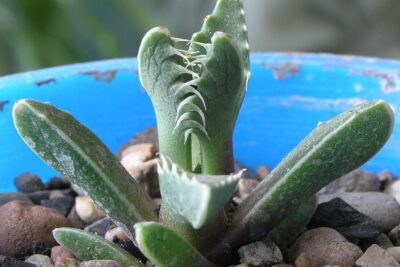

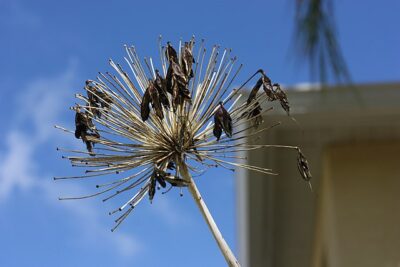
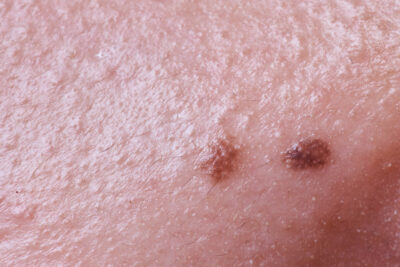
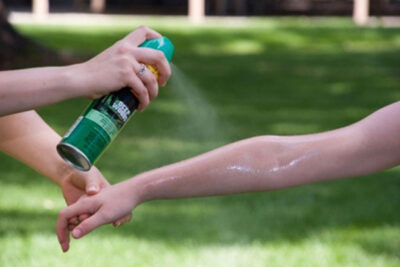
You Must Read